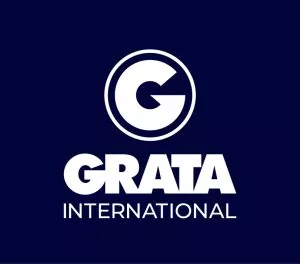The Tax Code of Kazakhstan 1 provides for a wide range of tax control forms, with the main ones being cameral tax control and on-site tax inspections.
Tax control is carried out by tax authorities, as well as customs authorities in relation to VAT on imports and excise duties payable in connection with the movement of goods across the border.
Any act as well as action (inaction) of the tax authority can be appealed by the taxpayer to a higher tax authority and/or courts, if they consider them unlawful and unjustified.
CAMERAL TAX CONTROL
Due to the digitalization of tax administration, tax authorities have widely implemented cameral tax control.
Within the framework of cameral control, tax authorities remotely monitor and analyze tax reporting and other documents submitted by taxpayers, as well as other information about taxpayers received from government agencies and other sources.
- If any discrepancies, errors, or violations are detected as a result of cameral control, the tax authority notifies the taxpayer about them for self-correction.
- The notification from the tax authority regarding violations identified during desk control must be executed by the taxpayer within a 30-day period through self-correction of the violations. For example, this can be done by submitting additional tax reporting with the calculated tax amount or by correcting the electronic invoice.
- If the taxpayer disagrees with the notification, they have the right to submit a written explanation to the tax authority with supporting documents and/or appeal the notification to higher tax authority. If the taxpayer and the tax authority do not reach a consensus, the tax authority must conduct an on-site tax inspection of the taxpayer to verify the issue and make a final decision.
- If the tax authority's notification requires the adjustment of tax amounts or payments due to court rulings declaring transactions invalid, invalid state registration of a counterparty, or the determination that goods were not actually supplied and services were not rendered, then in case of disagreement, the taxpayer can appeal such a notification only in court.
- If the taxpayer does not respond to the notification within the 30-day period (does not fulfill or appeal), the tax authority has the right to arrest their bank accounts or restrict the issuance of electronic invoices, and later appoint an on-site tax inspection.
- It is important to note that the taxpayer is not subject to administrative or criminal liability in case of violations discovered based on the results of cameral control.
- Cameral control is part of a risk management system for categorizing taxpayers into different levels and selecting them for on-site tax inspections.
ON-SITE TAX INSPECTION
An on-site tax inspection is usually conducted at the taxpayer's location to verify the accuracy and completeness of the taxpayer's compliance with tax obligations and social payments, as well as on issues of transfer pricing and government regulation of the production and turnover of excisable goods (crude oil, alcohol, tobacco, petroleum products, etc.).
The tax inspection is carried out based on a prescription issued by the tax authority that assigned the inspection. The prescription for conducting the inspection, as well as notifications of suspension, resumption, and extension of the inspection, must be registered with the prosecutor's office. The taxpayer has the right to refuse entry to the office or premises of tax authority officials if they do not present the prescription.
Types of tax inspections:
BY REGULARITY:
- Periodic tax inspections, for which taxpayers are selected based on the risk management system at the beginning of each half-year. Lists of taxpayers subject to inspection are published by tax authorities;
- Unscheduled tax inspections, which are appointed, for example, based on the taxpayer's request, within the framework of criminal proceedings, etc.
BY SUBJECT MATTER:
- In the framework of a comprehensive tax inspection all types of taxes and obligatory payments are subject to inspection;
- Thematic tax inspection - separate types of taxes, obligatory payments or separate issues are inspected;
- Counter tax inspections - mutual settlements with counterparties are checked to confirm the fact and nature of transactions;
- A time inspection is carried out to establish the actual income and expenses of the taxpayer during the period of the inspection.
The duration of a tax inspection is up to 30 business days from the date of issuing the prescription, with the possibility of extension up to 180 business days. The tax authority is authorized to suspend the inspection period during the collection of requested documents and information.
In the framework of a tax inspection, the tax authority has the right to require the taxpayer to submit accounting and primary documentation, written explanations, including from employees, access to view the information software used to automate accounting and tax accounting, to inspect property and conduct inventories, request information about the taxpayer and their activities from government agencies, banks, and other organizations, including information protected by law as confidential, send requests to foreign states, etc.
To view the full article click here
Footnote
1. Code of the Republic of Kazakhstan «On taxes and other obligatory payments to the budget (Tax Code)» (25 December, 2017 № 120-VI)
The content of this article is intended to provide a general guide to the subject matter. Specialist advice should be sought about your specific circumstances.

